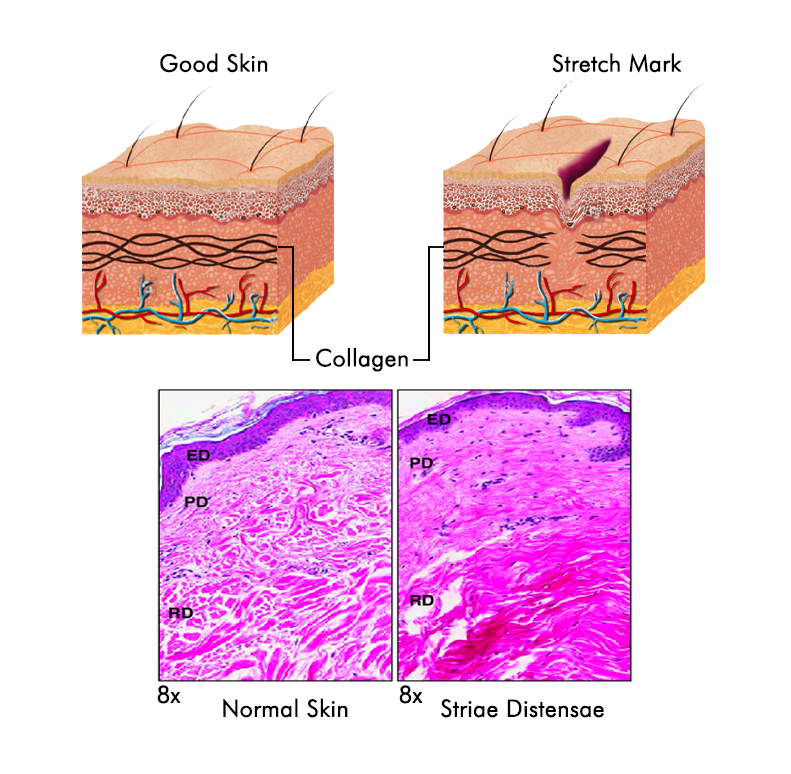TECA comprises of asiatic acid, madecassic acid, asiaticoside and madecassoside, and this mixture is commercially marketed as a titrated extract of Centella asiatica (TECA).
It is used as an anti-microbial, anti-oxidative and anticancer agent, as well as a therapeutic agent in the various processes of wound healing, such as coagulation, inflammation, cell migration and proliferation as well as scar formation and remodeling.
Trofolastin has been used in a study for the prevention of Striae Distensae (SD) and also contains the active ingredients; TECA (Centella asiatica), tocopherol and collagen-elastin hydrolysates. It is suggested that TECA stimulates fibroblasts and has an antagonistic effect against glucocorticoids. A randomized controlled trial compared the treatment cream to a placebo in 80 subjects.
Their results demonstrated that 56% of subjects in the placebo group compared to 34% in the treatment group developed SD. Additionally, in women who had a history of SD during puberty, the treatment cream gave 100% prevention of SD, compared to 89% in the placebo group.
A number of products contain the active ingredient TECA (Centella asiatica) which is suggested to stimulate cell production. A Stretch Mark Day Gel and Night Cream is a moisturizing cream which contains TECA (Centella asiatica) and claims to prevent Striae Distensae (SD). A product comparative study was undertaken with 25 women, who completed a questionnaire. They reported that Stretch Mark Day Gel and Night Cream containing TECA scored the highest in all outcomes.
Reference:
Topical management of striae distensae (stretch marks): prevention and therapy of striae rubrae and albae S. Ud-Din,1’2 D. McGeorge,3 A. Bayat1’2’
- Plastic and Reconstructive Surgery Research, Manchester Institute of Biotechnology, University of Manchester, Manchester, UK
- Centre for Dermatology, Institute of Inflammation and Repair, Faculty of Medical and Human Sciences, University of Manchester, Manchester Academic Health Science Centre, Manchester, UK
- Centre for Dermatology, Institute of Inflammation and Repair, Faculty of Medical and Human Sciences, University of Manchester, Manchester Academic Health Science Centre, Manchester, UK


